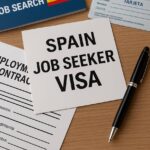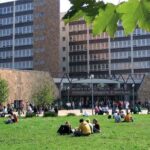Australia is one of the most attractive destinations for international students—not just for its world-class education, but also for the long-term opportunity it presents: Permanent Residency (PR). For many, the dream of studying in Australia goes hand in hand with building a life there. Fortunately, the Australian immigration system offers clear pathways from being a student to becoming a Skilled Migrant with PR status.
Here’s a step-by-step breakdown of how that journey typically unfolds.
Step 1: Study in Australia on a Student Visa (Subclass 500)
The journey begins with enrolling in a CRICOS-registered course at an Australian institution. This could be a diploma, bachelor’s, master’s, or even a doctoral program.
While studying, you:
-
Gain qualifications in a field that could be in demand
-
Build local experience and connections
-
Improve your English language skills
-
Become familiar with Australian culture and work standards
Some students choose their course strategically based on Australia’s Skilled Occupation List (SOL), which greatly helps in the PR pathway later.
If you need an explanation on writing your CV, Cover Letter and Email Template or help applying speak to Happy Face
Step 2: Apply for a Temporary Graduate Visa (Subclass 485)
After completing your studies, you may be eligible to apply for a Temporary Graduate Visa, which allows you to:
-
Live, study, and work full-time in Australia for 2–4 years (depending on your qualification and location)
-
Gain valuable work experience in your field
There are two streams:
-
Graduate Work Stream – For graduates with skills related to occupations on the Medium and Long-Term Strategic Skills List (MLTSSL)
-
Post-Study Work Stream – For students who completed a higher education degree from an Australian institution
This visa acts as a crucial bridge between study and skilled migration.
Step 3: Gain Skilled Work Experience
While on the 485 visa, it’s important to work in your nominated occupation or related field. This work experience:
-
Strengthens your application for skilled visas
-
Increases your points in the points-tested migration system
-
Shows you can contribute to Australia’s workforce
Some may also choose to improve their credentials during this period (e.g., doing professional year programs or English language tests like PTE or IELTS).
Step 4: Check Eligibility and Get a Skills Assessment
To apply for most skilled visas, you must undergo a skills assessment by an assessing authority relevant to your occupation. This confirms your education and experience meet Australian standards.
Each occupation has a specific authority (e.g., ACS for IT professionals, Engineers Australia, AITSL for teachers, etc.).
If you need an explanation on writing your CV, Cover Letter and Email Template or help applying speak to Happy Face
Step 5: Submit an Expression of Interest (EOI) via SkillSelect
Once your skills assessment is complete and you meet the criteria, the next step is to lodge an Expression of Interest (EOI) through SkillSelect.
You’ll need to provide details on:
-
Your occupation
-
English language ability
-
Work experience
-
Education
-
Other factors (e.g., partner skills, community language, etc.)
Your points score will determine your competitiveness. Currently, a score of 65 or more is required, but higher scores have a better chance of receiving an invitation.
Step 6: Get Invited and Apply for a Skilled Visa
If your EOI is successful, you may receive an invitation to apply for one of the following PR visas:
-
Skilled Independent Visa (Subclass 189) – For skilled workers who are not sponsored
-
Skilled Nominated Visa (Subclass 190) – Requires nomination by an Australian state or territory
-
Skilled Work Regional (Provisional) Visa (Subclass 491) – For skilled workers willing to live and work in regional areas
Each of these pathways leads either directly or indirectly to permanent residency.
If you need an explanation on writing your CV, Cover Letter and Email Template or help applying speak to Happy Face
Step 7: Receive PR Grant and Settle as a Permanent Resident
Once your skilled visa is granted, you officially become an Australian Permanent Resident. PR status offers many benefits:
-
Unlimited work and study rights
-
Access to Medicare (Australia’s public healthcare system)
-
Pathway to Australian citizenship (after meeting residency requirements)
-
Sponsor eligible relatives for permanent residency








